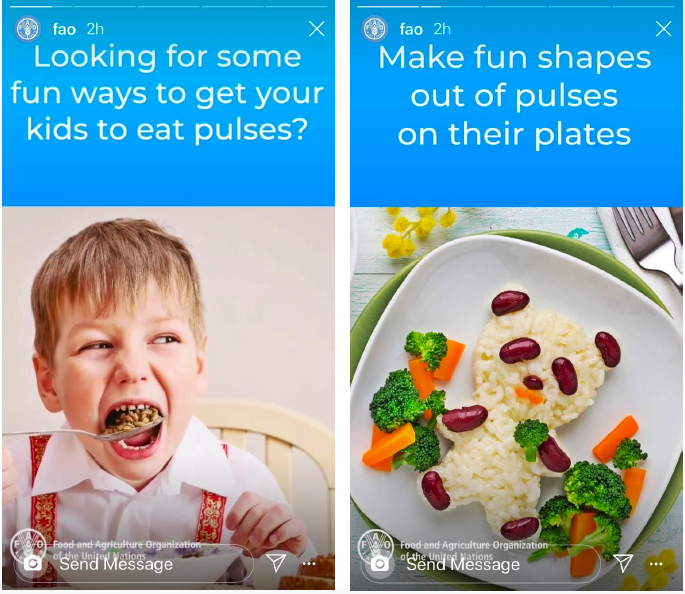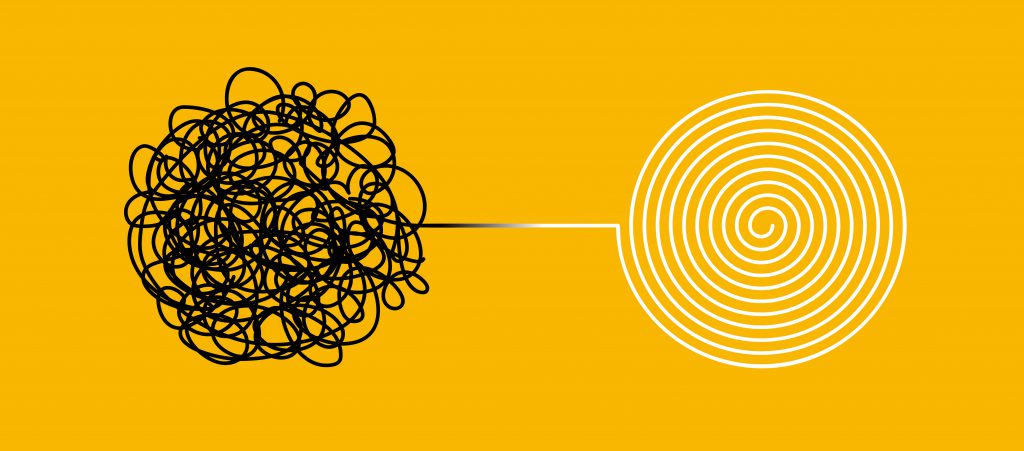
Bean and Rice Pandas: a recipe for social change?
The images above have been posted as stories by FAO, the Food and Agriculture Organization of the United Nations, through the agency’s official Instagram profile. FAO’s overall mission as a specialized development agency of the UN is to defeat hunger and achieve food security for all. Looking at the above stories in the light of this, some questions arise: in which way do these images possibly contribute to alleviating hunger in the world? How do they benefit underprivileged communities or promote social change? Even after trying, it remains challenging to find links between the Instagram stories and the organization’s development mission. So why is FAO using its precious resources to give (rather bad) advice to western parents who’s children won’t eat pulses?
In the global digitalized world we live in, social media platforms have become public spaces where private and public agents from countless different sectors and backgrounds express themselves to gain recognition and public consent. In this scenario, many humanitarian agents that rely heavily on individual private contributions make consistent use of social media use to gain visibility and attract donations; the consequence is that their online profiles and activities have become a crucial part of their work. For UN agencies such as FAO, which collect donations directly from governments, social media visibility is arguably less important. However, in a heavily interconnected world where information flows at unprecedented speed, even the organizations that do not need to rely directly on online promotion to collect funding still need to legitimate their existence to the general public, and part of this consists in keeping their digital profiles active and running.

Keeping an online profile active and visible does not only call for creativity and content knowledge: it also requires specific know-how on the apps in use and the algorithms at play. According to social media management platform Hootsuite, for instance, “Instagram chief Adam Mosseri revealed that a posting cadence of 2 feed posts per week and 2 Stories per day is ideal for building a following on the app”. So what happens when the number of posts needed to comply with an algorithm is higher than the materials and resources that an organization has access to? Stories on rice and beans pandas happen.
The question on whether a need to satisfy Instagram’s algorithms justifies or not a lack of consistency in the way in which an organization invests its resources brings to light a broader issue: in the era of digital media, what development organizations communicate is not only driven by their mission, but also by their need to reach quantitative targets to maintain followers and visibility online. This compromise may affect a development organization’s work in several ways: firstly, as the short case study in this post reveals, organizations may end up privileging quantity over quality at the risk of compromising their reputation and credibility. Secondly, in tie this may lead to a need to increase the amount of funding allocated to media marketing activities in the global North to the detriment of the implementation of actual development activities in the Global South.
Creative solutions?

Ultimately, even after having examinied and understood, at least in part, the struggles and dilemmas that may lead an organization like FAO to post stories such as the above, I believe this should not be accepted. As we will continue to explore in this blog, ICTs have both positive and negative potentials and impacts in development and humanitarian contexts. It is a responsibility of the single organizations to find creative solutions to take advantage of digital technology as facilitator for social change, rather than to simply submit to online market trends at the risk of misusing resources and losing sight of their ultimate goals.
Comments, questions and thoughts are most welcome, the comment section is all yours!

